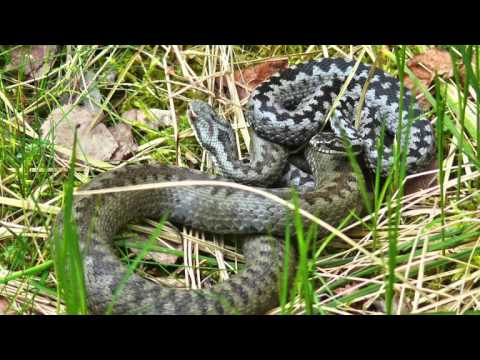
Generally speaking, snakes do not attack, they would much rather move away from people and dogs but when they are threatened, they can bite. This could be when your walking in undergrowth and with dogs, they also try to play with the snake, causing it to bite.
The common times for adder bites are for February to October with the peak season from June to August.
Many people are bitten on the toes and feet but half of all cases are where people are bitten on the hands, where they try to pick up the snake or try to kill it. Even a dead snake does have a bite reflex so leave them alone even if they are dead.
People who do outdoor pursuits of all types can come across snakes as they are in river banks to cliffs. So whether you are a walker or rock climber be aware at all times.
When your bitten, you may just think you have a small cut but the area will quickly swell. It will feel to start with like a wasp sting and you may be fine keeping moving for a while. In 5 minutes it gets worse and often in 15 minutes you would not be able to walk if it bites your foot. The area becomes very red and the bite mark becomes like a white circle and after a while red blotches appear all over the body.
Dizziness, chest pain, vomiting, breathing difficulties, stomach ache and unconsciousness can follow. An anaphylactic reaction can occur as the body reacts to the poison. Watch out for a swollen tongue and throat.
Hospital treatment is required as soon as possible so the correct anti venom can be given.
If it is possible at the time of the bite, look at the snake or take a picture, but only if it’s safe to do so, then the doctors can establish what the snake was and give the correct treatment.
The general advice for treatment is to activate the emergency services, note the time of the bite, reassure the patient, do not bandage and avoid interfering with the bite. If pain relief is given use paracetamol not ibuprofen as this can cause bleeding and clotting problems which will make things worse.
It may be necessary to split the limb if possible to reduce movement and slow down the the transit of the poison around the body.
Finally, where there is swelling, it is a good idea to mark the edge of the swelling with a pen and note the time so you can track its progress.

